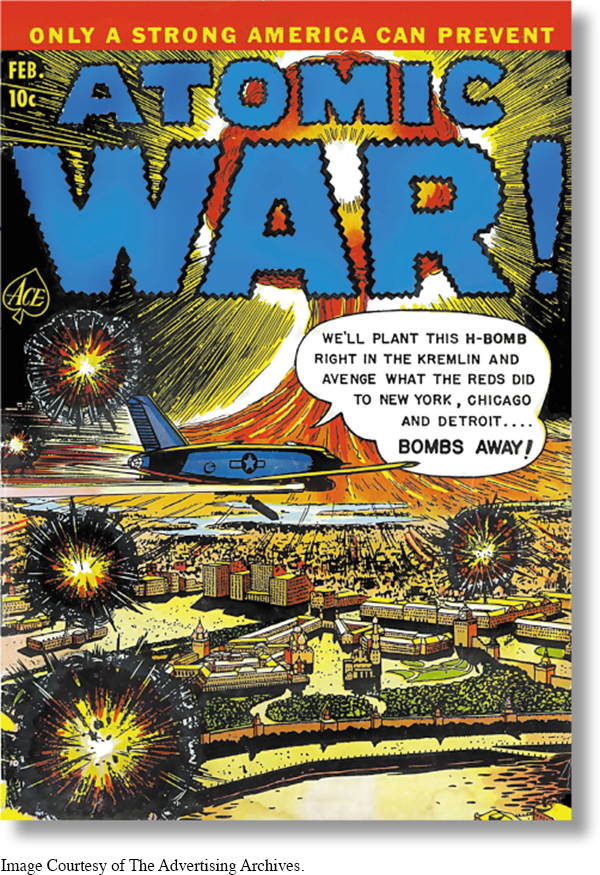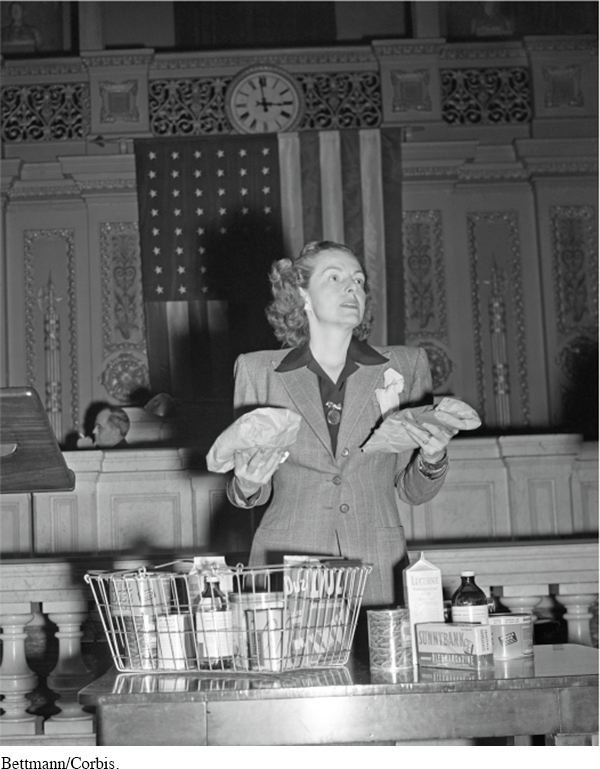The American Promise: Printed Page 745
The American Promise, Value Edition: Printed Page 676
The American Promise: A Concise History: Printed Page 772
Introduction to Chapter 26
The American Promise: Printed Page 745
The American Promise, Value Edition: Printed Page 676
The American Promise: A Concise History: Printed Page 772
Page 74526
Cold War Politics in the Truman Years
1945–

CONTENT LEARNING OBJECTIVES
After reading and studying this chapter, you should be able to:
Explain the origins of the Cold War, and describe where and how the containment policy was implemented.
Describe President Truman’s Fair Deal domestic agenda, and explain its accomplishments and failures.
Explain why the United States went to war in Korea and how military objectives changed. Identify the war’s costs and consequences.
HEADS TURNED WHEN CONGRESSWOMAN HELEN Gahagan Douglas walked through the U.S. Capitol. She was one of only ten female representatives in the 435-
Born in 1900, Helen Gahagan grew up in Brooklyn, New York, and left college early for the stage. She quickly won fame on Broadway, starring in show after show until she fell in love with one of her leading men, Melvyn Douglas. They married in 1931, and she followed him to Hollywood, where he hoped to advance his movie career and where she bore two children.
Helen Gahagan Douglas admired Franklin D. Roosevelt’s leadership during the depression, and the Douglases joined Hollywood’s liberal political circles. Douglas visited migrant camps where she saw “faces stamped with poverty and despair.” Her work on behalf of poor migrant farmworkers led her to testify before Congress and become a friend of the Roosevelts. In 1944, she won election to Congress, representing not the posh Hollywood district where she lived but a multiracial district in downtown Los Angeles, which cemented her dedication to progressive politics.

Like many liberals, Douglas was devastated by Roosevelt’s death and unsure of his successor. “Who was Harry Truman anyway?” she asked. A compromise choice for the vice presidency, this “accidental president” lacked the charisma and political skills with which Roosevelt had transformed foreign and domestic policy, won four presidential elections, and forged a Democratic Party coalition that dominated national politics. Besides confronting domestic problems that the New Deal had not solved—
The American Promise: Printed Page 745
The American Promise, Value Edition: Printed Page 676
The American Promise: A Concise History: Printed Page 772
Page 746By 1947, a new term described the hostility that had emerged between the United States and its wartime ally, the Soviet Union: Cold War. Truman and his advisers insisted that the Soviet Union posed a major threat to the United States, and they gradually shaped a policy to contain Soviet power wherever it threatened to spread. As a member of the House Foreign Affairs Committee, Douglas urged cooperation with the Soviet Union and initially opposed aid to Greece and Turkey, the first step in the new containment policy. Yet thereafter, Douglas was Truman’s loyal ally, supporting the Marshall Plan, the creation of the North Atlantic Treaty Organization, and the war in Korea. The containment policy achieved its goals in Europe, but communism spread in Asia, and at home a wave of anti-
Douglas’s earlier links with leftist groups and her advocacy of civil rights and social welfare programs made her and other liberals easy targets for conservative politicians exploiting the anti-
CHRONOLOGY
| 1945 |
|
| 1946 |
|
| 1947 |
|
| 1948 |
|
| 1948– |
|
| 1949 |
|
| 1950 |
|
| 1951 |
|
| 1952 |
|
| 1953 |
|